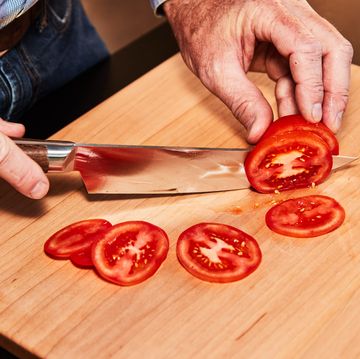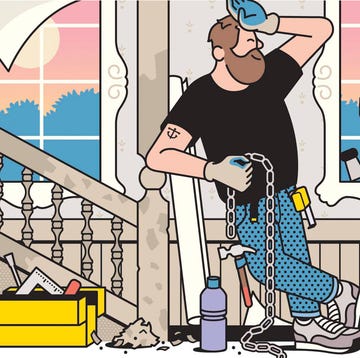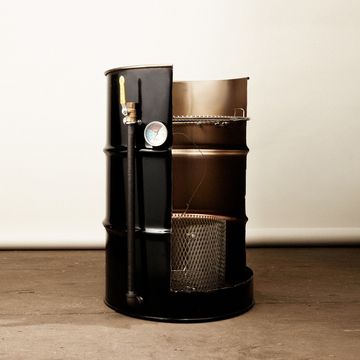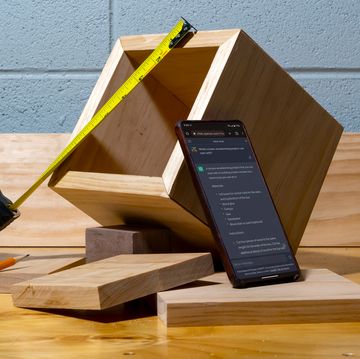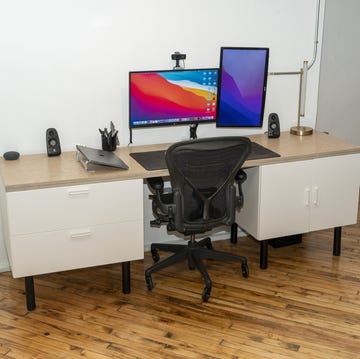The most important tool in any shop doesn't have a motor, a battery or a cutting edge, and it has remained largely unchanged for centuries. A traditional woodworking bench, at its most elaborate, was a virtual showpiece, bristling with vises, bench dogs and holddown clamps. And it was planed dead true to act as a standard for the craftsman to follow. Our rough-and-ready work surface visually recalls one of these classic double-trestle benches, but it's a far simpler affair. The bench goes together with ordinary construction lumber, lagscrews, dowels and a top assembled from 1 x 2s joined with threaded rod. It's designed to be a sturdy and unpretentious partner to capably support years of projects.
Tools & Materials
Wood: We used construction-grade lumber, but bear in mind that this stock can vary in quality. Try to pick straight, dry pieces with a minimum of knots or other defects. And, while we used budget materials, it doesn't mean clear hardwood wouldn't work even better.
| Basic Tools |
* Circular saw
* Handsaw
* Hacksaw
* Drill/driver
* Block plane
* Doweling jig
* Tape measure
* Square
* 9/16-in. wrench
* 1-in. spade or multispur bit
* Twist bits
* 3/8-in. threaded rod
* 3/8 x 4-in. lagscrews
* 3/8 x 6 1/2-in. lagscrews
* 3/8 x 4 1/2-in. lagscrews
* 3/8-in. washers
* 3-in. No. 10 fh woodscrew
* Glue
* Vise shown: 9-in. quick-release vise (No. 10G0412), available from Lee Valley Tools (leevalley.com)
Step 1
The bench legs and rails are made from 2 x 4s, while the heavier 2 x 6 stretchers add rigidity to the frame. If you don't have a power miter saw or radial-arm saw, guide your circular saw with a rafter-angle square such as a Speed Square when crosscutting the stock to finished size. Cut the top strips oversize in length.
Remember that building your own bench gives you the opportunity to customize it to match your height, your space and the work you plan to do. For a stouter top, or for a bench that's much longer, consider replacing the 1 x 2s with 1 x 3 stock.
Quick Tip: Screws drive easier with lubrication applied sparingly to the threads. A good material for the job is a wax ring used for installing toilets, available at any hardware dealer.
Step 2
Lagscrews driven into endgrain don't hold that well, especially in softwood. To solve the problem, glue 1-in.-dia. dowels in the paths of the lagscrew threads. Cut the dowels slightly oversize with a handsaw, then plane them flush once they're in place. You can use a spade bit to bore the dowel holes, but a multispur bit will make a cleaner hole. Bore 3/8-in. thread-clearance holes in the adjoining pieces, then bore 3/16-in. pilot holes for the lagscrew threads.
Step 3
With the top strips cut uniformly oversize, lay out and bore 3/8-in. holes for the threaded rods. Cut the rods slightly long, install a washer and nut on one end of each and feed each strip onto the rods. When they're all in place, add the remaining washers and nuts, tighten and trim the benchtop ends and hacksaw the rods to length.
Step 4
The vise we installed required a 2-in. spacer, which we made from three layers of wood, to bring the vise top flush with the benchtop. Depending on the kind of work you do most often, you could install a top-mounted mechanic's vise instead.
Boring Aligned Holes
A doweling jig is the best tool for aligning the threaded-rod holes across the top strips. If there's any misalignment after assembly, simply trim the high points with a block plane.






